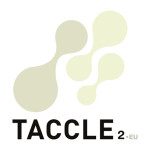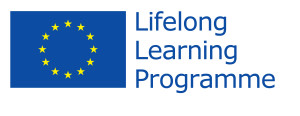LEARNING OBJECTIVES
By the end of this post you should be able to:
- Say what a wiki is and explain the philosophy of a wiki .
- Describe a wiki’s basic structure and the software that can be used to create one.
- List some advantages and disadvantages of using a wiki.
- Suggest situations and projects in which a wiki could be useful .
- Set up a wiki and develop a collaborative document.
WHAT IS A WIKI?
A wiki is a page or collection of Web pages built in a way that enables anyone who accesses them to contribute new information of their own and amend content already there. It is also the name of the software that enables us to create, edit and link the pages.
The best known one is Wikipedia, an encyclopaedia built by its users. You will almost certainly have used this yourself.
As with weblogs, wiki software allows us to publish online without facing the technical barriers.
In short, a wiki is a webpage that is created and can be revised collaboratively. It enables people to add, delete, or change information without knowing a programming language or going through a Webmaster.
GETTING STARTED WITH WIKIS
Firstly, you need some software. One of the most used by classroom teachers is PBwiki (the url is given at the end of the chapter). It is free, simple to set up and very easy to use. An added bonus is that for ‘educators’, it is free from the advertisements that finance its development and distribution.
A wiki page usually has two ‘modes’ or views. The ‘normal mode’ is the actual finished page seen by the reader and looks like any other web page. This cannot be changed by every user. However, it will also have an ‘editing mode’ accessed by clicking on the ‘edit’ button on each page. This facility can be open to any user or it can be protected and restricted to designated users who access it through a log in name and password.
Platforms such as PBwiki allow you to specify who can manage the pages, who can manage the folders in the pages, who can write and who can read only.
The editing mode is the most interesting part of a wiki, because it is the place where the authors can change text, edit existing pages and add new ones.
Changing the appearance of a website usually depends on using a ‘mark-up’ language. This is just a set of instructions and notes added to text which specifies how it will appear on your screen. The most widely used mark-up language used on the web is HTML (Hyper Text Mark up Language). However, this is quite complicated for the average user. Wikis use a very simple mark up language (sometimes called ‘wikitext’) that can be used by almost anyone and wiki software has ‘built in’ instructions that tell you all you need to know.
Each time someone makes a change it is recorded. There will usually be a ‘recent changes’ page and also a ‘revision history’ showing who made what changes and when. It is also possible to restore a previous version of the work.
The importance of links
One of the key features of a wiki is its ability to create meaningful links between the pages. (Think how Wikipedia uses several devices to direct you towards other pages that are related or that might interest you.)
So if you are building a wiki, creating links is important because they are a simple way to generate new wiki pages. Links can be created easily by putting the words you want to link in brackets and the software automatically transforms them into live links to pages named with the same word. If no such pages exist, they are automatically created.
Trust and security
Wikis are obviously open to abuse. As Lars Aronsson[1] puts it “It sounds like offering free spray cans next to a grey concrete wall”. Rather than make it difficult to edit and add content, wikis are designed so that unwanted material can be got rid of easily. Editors can check quickly what changes have been made and delete them or restore a previous version.
As we said above, some wikis are entirely open and can be edited by anyone, others allow only registered users. Open wikis such as Wikipedia tend to have more users and thus grow faster but are more open to ‘vandalism’. They rely on the large community of users to police the pages and increase the reliability of the entries over time. Closed wikis such as Citizendium, where contributors go through a ‘vetting’ process are much more reliable and vandal-proof but grow more slowly. The same general principle will apply to wikis you may create in your classroom.
WIKI AND KNOWLEDGE SHARING
Wikis make two assumptions. The first is that knowledge is transitory and not [2]static; there is always some new piece of information to add, some old piece to delete or revise and so on. The second assumption is that the whole is greater than the sum of the parts. Through each individual’s contribution, the resulting product gets better and better.
For this reason, a wiki is a good platform if you want to create a collaborative project with other people. It is also very useful if you are in different places and you cannot work together face-to-face. Just to give you an example, the book that you are reading has been written using a wiki to which every author added their materials and the opportunity for everyone else to revise it. So one use of a wiki is in a situation where a group of people have to write a single document – a paper, a book, etc. – on a specific topic. However, if the final document is long and complex, it is useful to assign each part of the work to a particular contributor who is responsible for managing and checking the content of particular wiki pages and another person who will edit the final version.
Using wikis in the classroom
Technologies Internet et Education (TECFA), a research and teaching unit at the University of Geneva, lists the following uses for wikis in education:
- As information sources.
- As places for students to hand in assignments, which could include peer ratings from other students.
- As tools for collaborative Web-writing (to create collective knowledge)
- For problem solving.
- As project ‘spaces’.
- As discussion forums.
- As libraries or databases around particular cases or topics .
- A place to practice collaboration and co-operation skills.
An entire class can use a wiki to generate a collective product. If the learning activity of an individual has to be assessed or examined, you can choose to create single accounts for every participant so that you can see who is writing what and you can check that the progress of each individual is satisfactory. Conversely, you may want to assess their ability to work as a team and create a shared log in for a whole group.
You can use wikis with your colleagues to create the material for a course. It is simple, low cost and intuitive and an innovative way to share and create information about specific topics.
Obviously, there are some overlaps between the things that wikis can do and the things that multi author blogs can do. In some cases, you could choose either. As a general rule, if you want to produce something that captures individual contributions as part of a collective whole or if you want to give feedback to individuals, then multi user blogs may be more appropriate. If, however, you want to produce a single product collaboratively, then wikis may be a better tool. A wiki can also be integrated in a Learning Management System
ASSIGNMENTS
- Set up a wiki around a theme or topic your students are studying. Put some material on the site and encourage them to add more. You could set this as a homework assignment.
Resources and reference material
ARONSSON, L., Operation of a Large Scale. General Purpose Wiki Website. Experience from susning.nu’s first nine months in service. Berlijn, Verlag für Wissenschaft und Forschung, 2002.
CARVIN, A. (2006) ‘Using a Wiki to Promote Educational Blogging’ (WWW). Public Broadcasting Service: www.pbs.org/teachers/learning.now/2006/06/using_a_wiki_to_promote_educat.html (04.01.07)
CUNNINGHAM, W. & LEUF, B. The Wiki Way. Quick Collaboration on the Web, Indianapolis, Addison Wesley, 2006. EBERSBACH, A. & GLASER, M. & HEIGLl, R., Wiki: Web Collaboration, Berlin Heidelberg, Springer Verlag, 2006.
FORTE, A. & BRUCKMAN, A. ’From Wikipedia to the Classroom: Exploring Online Publication and Learning’. Proceedings of the International Conference of the Learning Sciences: www-static.cc.gatech.edu/~aforte/ForteBruckmanFromWikipedia.pdf (pdf-rapport) (25.05.09)
GLOGOFF, S. ‘The LTC Wiki – Experiences with Integrating a Wiki in Instruction’ in Using Wiki in Education, MADER, S. (Ed.), 2006. Retreived May 26, 2009 from the World Wide Web: www.wikiineducation.com
GRANT, L. (2006) ‘Using Wikis in Schools: A Case Study’ (WWW). Futurelab: www.futurelab.org.uk/research/discuss/05discuss01.htm (pdf-rapport) (17.11.06)
PBwiki: http://pbwiki.com/ WIKIPEDIA (21.05.09) ‘Wiki‘ (WWW). Wikimedia Foundation, Inc.: http://en.wikipedia.org/wiki/Wiki (26.06.08)
[1] ARONSSON, L., Operation of a Large Scale. General Purpose Wiki Website. Experience from susning.nu’s first nine months in service. Berlijn, Verlag für Wissenschaft und Forschung, 2002.




 English
English Nederlands
Nederlands Deutsch
Deutsch Italiano
Italiano Español
Español Português
Português Română
Română Cymraeg
Cymraeg
No comments yet.